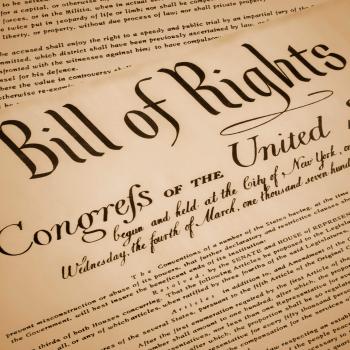Bill of Rights Day is observed.

Event Description
The Bill of Rights was ratified by three-fourths of the newly formed United States in 1791 to ensure individual rights that were not addressed in the United States Constitution. These first 10 amendments to the Constitution enumerate and protect many of our rights, including freedom of speech, worship, the press, and assembly.
Classroom Activity
Bill of Rights Day is a good opportunity for students to explore a variety of students' rights issues. Ask students to identify an issue that has come up in your school, such as dress codes, drug testing, zero tolerance, privacy, religion, or freedom of expression. Have them explore the ways in which the Bill of Rights protects and does not protect students, as well as some of the past and recent challenges to students' rights. Have students write position papers or debate individuals or teams of students with opposing points of view. The American Civil Liberties Union (ACLU) Student Rights page has information and articles about recent court cases focused on students' rights.
Students can continue to explore the Bill of Rights by examining the ways in which it applies to current events and issues such as homeland security, prisoners' rights, the death penalty, and more. Provide access to a daily newspaper. Then ask students to construct a scrapbook or bulletin board display of articles that address Bill of Rights issues.
Websites
This website from the United States National Archives offers a look at the actual Bill of Rights, with links to high-resolution images and related information.
This ACLU resource provides a brief history of the Bill of Rights and the rationale for the creation of these 10 amendments to the United States Constitution.
This resource featured on Ben's Guide to the U.S. Government for Kids provides information about citizenship and the Bill of Rights.
This online exhibit includes images of many original documents and describes how the Bill of Rights was passed.